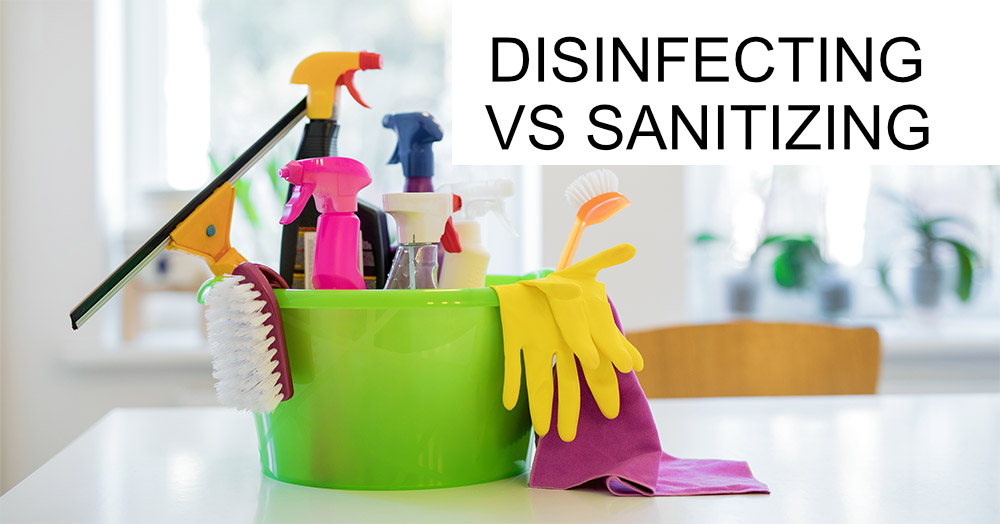DISINFECTING VERSUS SANITIZING
Disinfectants and sanitizers both kill virtually all the germs on most surfaces, so they’re often confused with each other or used interchangeably. However, there are key differences in their application methods and efficacies that should be noted before choosing a product. The environment that needs sanitization or disinfection is a key factor in determining what type of product should be used to keep people and animals safe from bacteria and other microscopic organisms.
What is a Disinfectant?
Disinfectants are products that destroy all organisms within ten minutes. Their efficacy is tested using the Association of Official Agricultural Chemists (AOAC) Use Dilution Test, which is a test regulated by the EPA to determine whether products can be called disinfectants. This distinction is important in settings where it is more important to kill all organisms rather than kill most of them in less time, like hospitals, nurseries, and public restrooms. Any area that comes into contact with bodily fluids, germs, and other potentially dangerous organisms should be disinfected to eliminate all risk, rather than reducing it.
What is a Sanitizer?
Sanitizers are products that destroy 99.999% of bacteria within 30 seconds. Their efficacy is tested using the Official Detergent Sanitizer Test, which is a standardized public health test. Some low-risk situations, like dishwashing and children’s play areas, require a vast majority of germs to be killed in a short amount of time. In these scenarios, it is beneficial to use a sanitizer. The minimum requirement for sanitizers that are approved for food contact surfaces is 99.999% of Staphylococcus aureus and Escherichia coli (E-coli) killed within one minute. Non-food contact sanitizers must reduce Staphylococcus aureus, Klebsiella pneumonia, and Enterobacter aerogenes bacteria by 99.9% within five minutes.
How to Use Disinfectants
Most disinfectants require ten minutes of wet contact with a surface to ensure complete elimination of the microorganisms on the surface. Depending on the product and the surface being disinfected, various levels of saturation are recommended. Always read the application instructions for the specific product you’re using. Never mix any other types of cleaners, sanitizers, other disinfectants, water, or anything else with your disinfectant as this will prevent it from working properly. Once applied, allow the surface to air dry and make sure it stays damp or wet (according to the included instructions) for ten minutes or more. Do not rinse disinfected surfaces, as this will reintroduce microorganisms to the surface.
How to Use Sanitizers
Like disinfectants, sanitizers should always be used according to the instructions that accompany the specific product you’re using. To eliminate 99.999% of germs on surfaces that are approved by the product, apply and saturate according to instructions. Do not mix with any other type of sanitizer, disinfectant, water, or any other product. Microorganisms will be killed within 30 seconds of application. Rinsing is optional after the product has been allowed to air dry.
Both disinfectants and sanitizers should be fully dry before the item or surface is used again. Many of these products are listed as only “slightly toxic” and are considered safe to use around mammals, but you wouldn’t want to cause accidental ingestion by preparing food on a wet surface or allowing a child to play with wet toys. Once dry, these surfaces are safe and germ-free.


Comments
DISINFECTING VERSUS SANITIZING — No Comments
HTML tags allowed in your comment: <a href="" title=""> <abbr title=""> <acronym title=""> <b> <blockquote cite=""> <cite> <code> <del datetime=""> <em> <i> <q cite=""> <s> <strike> <strong>